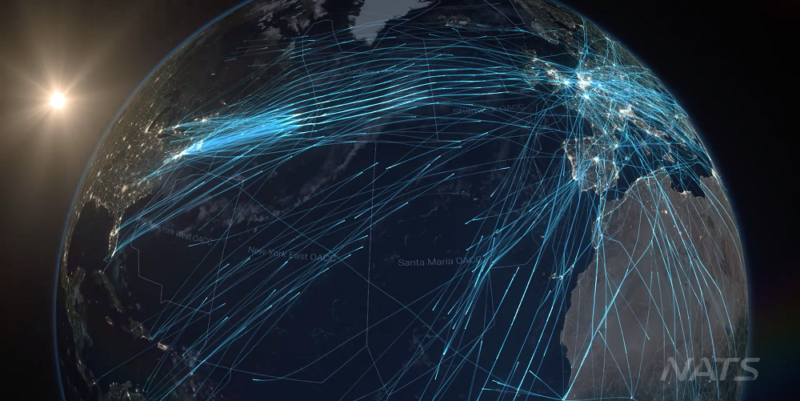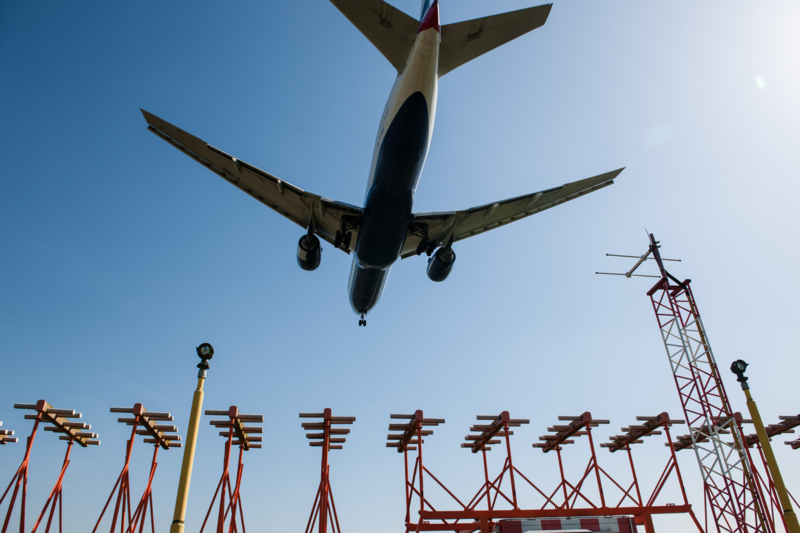When hot exhaust gases from aircraft meet the cold, low-pressure air of the atmosphere, they produce white streaks in the sky called ‘condensation trails’, or contrails. It is now a scientific certainty that the impact of contrails and contrail-induced cirrus clouds, despite their relatively short lifetime, have at least an equivalent impact on the climate as CO2 emissions, and potentially up to twice that. In fact, the average global climate impact caused every year by contrail cirrus is thought to be the same or even larger than the overall climate impact of aviation’s total CO2 emissions since the start of commercial air travel[1].
Back in May 2022, Jarlath Molloy wrote a blog to summarise NATS’ work to date on supporting partners across industry and academia to better understand the impact on the climate that contrails and the cirrus clouds that they create cause. That work supported a number of contrail avoidance live trials within European airspace and also enabled research to be published which quantified the true impact of our operations on the climate.
As a world-leading air traffic service provider regarding the non-CO2 impacts of aviation, we published a positioning paper highlighting our options for how a contrail avoidance trial could be safely managed over the North East Atlantic.
I recently had the privilege to present that research at the RAeS Greener by Design Conference: The non-CO2 climate effects of aviation. This event brought together thought leaders from across industry and academia and allowed us to gain valuable feedback on our paper – which I’m pleased to say was very positively received. Ultimately, the conference led to an unanimous agreement that now is the time for urgent action and doing nothing is not an option.

There are several measures that we need to take as an industry and Air Traffic Control has a vital role to play:
- Support researchers and meteorology/contrail forecast providers to continually improve our predictive capabilities.
- Work with airspace users and flight plan providers to develop cross-industry approved and scalable contrail avoidance methods.
- Continue to modernise our airspace to allow for maximum flexibility when seeking to route above, below or around areas where persistent warming contrails are expected.
- Engage with regulators, policy bodies and government to ensure that mechanisms are in place to drive change.
The trade-off against CO2 emissions is an important one, however, given the relatively small number of flights that would need a route amendment (~2% in domestic airspace and ~12% in oceanic airspace) any fuel penalties are expected to be negligible relative to the benefits of contrail avoidance, and in some cases there may even be fuel savings in addition to the non-CO2 benefits.
For our next steps, we are collaborating with European partners to bid for funding in the SESAR 3 CICONIA project which will allow us to progress against each of the measures above and run a contrail avoidance trial in our oceanic and domestic airspace, due to start next year. We are also investigating the impact that new fuel types, including low-aromatics, SAFs and hydrogen, could have on the prevalence of persistent warming contrails.
[1] Molloy, J.; Teoh, R.; Harty, S.; Koudis, G.; Schumann, U.; Poll, I.; Stettler, M.E.J. Design Principles for a Contrail-Minimizing Trial in the North Atlantic. Aerospace 2022, 9, 375. https://doi.org/10.3390/aerospace9070375
Comments
Please respect our commenting policy and guidelines when posting on this website.



